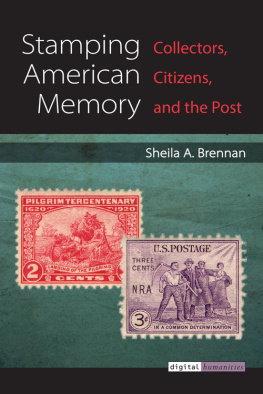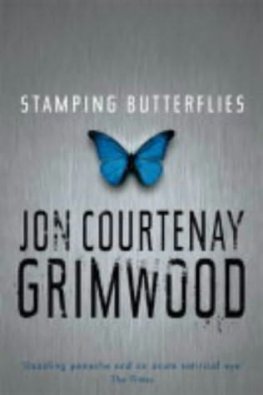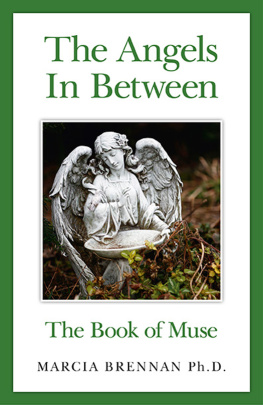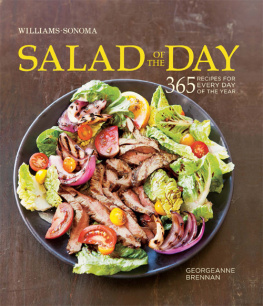Sheila A. Brennan - Stamping American Memory: Collectors, Citizens, and the Post
Here you can read online Sheila A. Brennan - Stamping American Memory: Collectors, Citizens, and the Post full text of the book (entire story) in english for free. Download pdf and epub, get meaning, cover and reviews about this ebook. year: 2018, publisher: University of Michigan Press, genre: Politics. Description of the work, (preface) as well as reviews are available. Best literature library LitArk.com created for fans of good reading and offers a wide selection of genres:
Romance novel
Science fiction
Adventure
Detective
Science
History
Home and family
Prose
Art
Politics
Computer
Non-fiction
Religion
Business
Children
Humor
Choose a favorite category and find really read worthwhile books. Enjoy immersion in the world of imagination, feel the emotions of the characters or learn something new for yourself, make an fascinating discovery.
- Book:Stamping American Memory: Collectors, Citizens, and the Post
- Author:
- Publisher:University of Michigan Press
- Genre:
- Year:2018
- Rating:3 / 5
- Favourites:Add to favourites
- Your mark:
- 60
- 1
- 2
- 3
- 4
- 5
Stamping American Memory: Collectors, Citizens, and the Post: summary, description and annotation
We offer to read an annotation, description, summary or preface (depends on what the author of the book "Stamping American Memory: Collectors, Citizens, and the Post" wrote himself). If you haven't found the necessary information about the book — write in the comments, we will try to find it.
Stamping American Memory: Collectors, Citizens, and the Post — read online for free the complete book (whole text) full work
Below is the text of the book, divided by pages. System saving the place of the last page read, allows you to conveniently read the book "Stamping American Memory: Collectors, Citizens, and the Post" online for free, without having to search again every time where you left off. Put a bookmark, and you can go to the page where you finished reading at any time.
Font size:
Interval:
Bookmark:
 Page i
Page i 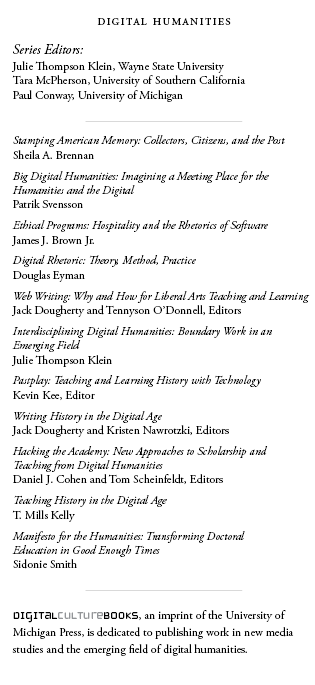 Page iii
Page iii Sheila A. Brennan
University of Michigan Press
Ann Arbor
Copyright 2018 by Sheila A. Brennan
Some rights reserved
This work is licensed under under a Creative Commons Attribution-NonCommercial 4.0 International License. Note to users: A Creative Commons license is only valid when it is applied by the person or entity that holds rights to the licensed work. Works may contain components (e.g., photographs, illustrations, or quotations) to which the rightsholder in the work cannot apply the license. It is ultimately your responsibility to independently evaluate the copyright status of any work or component part of a work you use, in light of your intended use. To view a copy of this license, visit http://creativecommons.org/licenses/by-nc/4.0/
Published in the United States of America by the
University of Michigan Press
Manufactured in the United States of America
A CIP catalog record for this book is available from the British Library.
Library of Congress Cataloging-in-Publication data has been applied for.
LCCN 2017059437
LC record available at https://lccn.loc.gov/2017059437
ISBN 978-0-472-13086-3 (hardcover : alk. paper)
ISBN 978-0-472-12394-0 (e-book)
ISBN 978-0-472-90084-8 (Open Access ebook edition)
http://dx.doi.org/10.3998/mpub.9847183
Cover credit: Pilgrim Tercentenary, two cents, 1920 (left) and National Recovery Act issue, 1933 (right). Courtesy Smithsonian National Postal Museum Collection.
Page vFor Ian
Page vi Page viiDuring my first year at Bates College, I selected a work study job at the campus post office where I sorted and delivered mail, weighed packages to be sent across country and abroad, and generated money orders. I worked there for four years and never once considered researching stamps or the postal service. And yet it became formative in my professional and personal development. Similarly, I always collected things at different stages of my life, but never stamps. It wasnt until I started working at a museum that I began to see how different objects came into museum collections and how one persons personal fascination with certain things transformed everyday objects into artifacts through the process of accessioning. This experience triggered my curiosity about the areas of collecting practices, memory studies, and material culture. During graduate school, when a family stamp collection arrived, I realized that I had a starting point for a bigger project.
I intended to write a synthetic history of collecting in the United States, but after some research found an enormous number of philatelic sources that scholars barely touched. My adviser at the time, the late Roy Rosenzweig, encouraged me to follow those sources and to focus on stamps and stamp collecting. I worried that the topic would be too narrow and, frankly, that I would grow bored. I never expected to discover that stamp collecting was so engrained in American culture in Page x the early twentieth century that it was the subject of hundreds of popular press articles and radio shows and used by department stores to promote sales. Or that the topic and practice figured into movie scripts like Charade, fiction like The Crying of Lot 49, or one-liners delivered by Groucho Marx in Duck Soup. Stamps and stamp collecting mattered, and I found good stories that connected collectors, noncollectors, and the US government in dialogues over the subjects of commemorative stamps because people cared about how those subjects represented the United States as a nation and an ideal.
The ideas embedded in this book and digital monograph were shaped, influenced, and supported by many people during its formation. I started this research under Roys guidance. At many times throughout this project, I wished for his counsel. I was lucky to have learned from him as my teacher and adviser, boss and mentor. I came to the PhD program at George Mason University because of him, and I remained to work at the place now named for him, the Roy Rosenzweig Center for History and New Media.
A major part of Roys legacy is the ethics he embedded in the work and the staff at the Center. The commitment to opennessto new ideas, collaborations, open-source software, open-access publishingpermeates our work there and work my colleagues and I do outside of the Center. The free, online version of Roy and Dan Cohens 2005 book, Digital History: A Guide to Gathering, Preserving, and Presenting the Past on the Web, motivated me to seek out publishers who would be amenable to a hybrid publication that includes a free, open-access, digital version. This is what led me to the University of Michigan Press and its Digital Culture Books division. The Press was one of the first academic publishers to invite scholars to experiment with form, review, and collaboration in digital formats. I am grateful to the Press and the Humanities, Arts, Science, Technology Collaborative (HASTAC) for creating opportunities that encourage junior scholars to publish digitally and for awarding me a Digital Humanities Publication Prize in 2012 to create Stamping American Memory as a hybrid publication.
I never intended to publish a print monograph. I wanted to create a long-form, open-access, digital project that invited commentary and underwent an open peer review process that might grow in a digital space into something far beyond my own ideas and sources. Developing, designing, and shepherding digital work, however, is challenging. Page xi What I developed resides at stampingamericanmemory.org, and, here is the print monograph. The print form retains some elements of the digital, because I wrote and revised with online readers in mind. The digital version contains more images and more discreet sections, but the ideas and the sources remain the same, and I hope you as the reader find this style works in print.
As I waded into the options for publishing Stamping American Memory digitally, I sought and received guidance from colleagues and friends who themselves successfully pushed back on traditional publishing formats and shared lessons they learned, including Kathleen Fitzpatrick, Dan Cohen, Tom Scheinfeldt, and Jack Dougherty. I am also grateful for those who generously volunteered their time to review this work during the open peer review process, who received no compensation but did so because they were interested this work and in participating in this type of review. Many thanks go to Denise Meringolo, Clarissa Ceglio, Ivan Greenberg, and Alyssa Anderson.
My research relies heavily on sources maintained locally and shared digitally from the Smithsonian National Postal Museum. The Postal Museum was one of the first history museums in the United States to launch a collections database filled with deep descriptive metadata and images. Arago: People, Postage & Post has been critically important to my work, and the images found in my digital and print publication draw heavily from sources in Arago I examined closely on my computer screen at home, and returned to over and over. This type of openness exemplifies how sharing collections online furthers scholarly research. The Postal Museums librarians and curators are responsive and helpful. This is also true of the staff at the American Philatelic Society, all of whom are genuinely pleased when researchers approach them about accessing records, objects, and special collections.
Font size:
Interval:
Bookmark:
Similar books «Stamping American Memory: Collectors, Citizens, and the Post»
Look at similar books to Stamping American Memory: Collectors, Citizens, and the Post. We have selected literature similar in name and meaning in the hope of providing readers with more options to find new, interesting, not yet read works.
Discussion, reviews of the book Stamping American Memory: Collectors, Citizens, and the Post and just readers' own opinions. Leave your comments, write what you think about the work, its meaning or the main characters. Specify what exactly you liked and what you didn't like, and why you think so.

